I am sorry it took so long to get this last but together. I was sick for the better part of a month and it pretty much ate my brain. Who knew you needed to be able to breath to write?
Anyways, in this case, we are wrapping up our look at official D&D settings (The first post found here) by looking at the licensed setting. These are officially published settings based on previously published works and presented as D&D versions. Before I get too into that, I should talk about Deities and Demigods and other early products which kind of involved improper use of settings they didn’t have permission for or the permission was murky.
The early days of the hobby was just done by a number of wargame enthusiasts. These were hobbyists and not natural born businessmen or lawyers. You know how you add stuff from your favorite novels, tv shows or comics to your games? They did that too.

Gary Gygax said on numerous occasions he did not much care for Tolkien’s work. He didn’t hate it. He just wasn’t excited about it as a lot of people. Despite that, the early D&D featured a lot of elements inspired by Middle Earth. They also had sold 3 board games based battles in Tolkien’s work. This lead to them getting cease and desist letters from companies who actually had legal rights to use Tolkien’s work. This is largely why we have Halflings in D&D and not Hobbits. After getting the legal challenges the company made an effort to publicly state that Tolkien was not that big an influence.
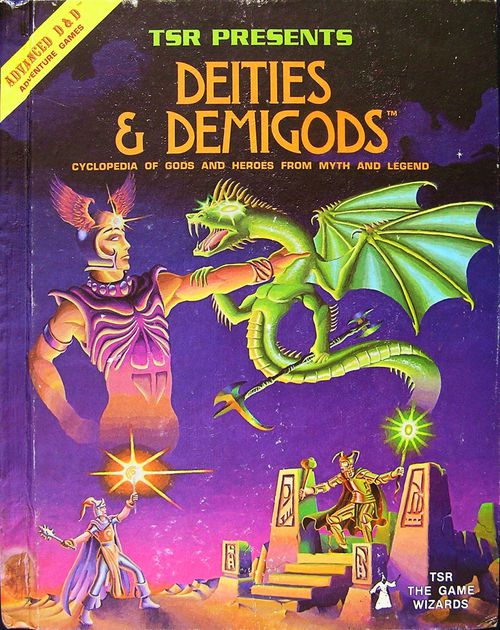
Tolkien was not their only legal hiccup in the early days. There were several lawsuits threatened over the years and threats of lawsuits. A few were again due to using material from existing worlds written by other people. The Deities and Demigods book presented gods from various myths and legends but also included some fictional worlds. The original printing included Nehwon Mythos(Based on the works of Fritz Leiber), Cthulhu Mythos(based on the works of Lovecraft), and Melnibonéan Mythos(based on the on the works of Michael Moorcock). James Ward actually requested permission from Moorcock and Leiber to use their works and assumed Lovecraft was public domain. Turns out Chaosium owned rights to use Moorcock’s material in games and threatened to sue. Additionally, Lovecraft was apparently not in the public domain and Arkham House also threatened to sue. Somehow, they managed to not get sued for all of the various conversions they put in Dragon Magazine. There was a column in Dragon called Giants in the Earth where they presented D&D stated versions of various characters in fiction. This included characters by Piers Anthony, Tanith Lee, Howard, Wagner, and quite a few more.
The other thing you should probably know about these early days is those campaign settings as we understand them now were not yet developed. Greyhawk was growing out of a collection of loose adventures. Deities and Demigods
Now that we have discussed their misuses of licensed settings, let’s look at some they actually had permission to use.
Newhon or Lankhmar
Fritz Leiber was one of the few early authors who were enthusiastic about licensing to the new game of D&D. He obviously included some of his worlds in Deities and Demigods. This also includes his most famous characters, Fafherd and the Grey Mouser.
Unlike the other licensed characters in Deities and Demigods, this was all without controversy. Leiber agreed to them using his characters and did so repeatedly. He published fiction in Dragon magazine and he enjoyed a good relationship with the company. The Dragon magazine regular column introducing various magic items was called “Bazaar of the Bizarre” after something from Leiber’s stories.

It is worth noting that royalty checks TSR paid Leiber were pretty much all he had to live on late in life. He died in 1992. The setting of Lankhmar has since been used in various game systems, including Savage Worlds, Dungeon Crawl Classics and Runequest.
Conan And Hyborea
There are few characters as iconic in fantasy as Conan. What is more, Gygax was a big fan of those stories. Robert E Howard was listed in the Appendix N along with Leiber. It is not surprising then that TSR made attempts at using Conan in their products. They did detail several characters from those stories in the pages of Dragon Magazine.
In 1984 the movie Conan the Destroyer came out in theaters. That same year, TSR published two adventures Conan Unchained and Conan Against the Darkness. Both adventures largely expected the players to play Conan and his amazing friends. Unsurprisingly, this had limited appeal. They didn’t publish a Hyborean setting book, but their adventures had some details about that world.

The following year they published three more adventures; Conan the Buccaneer, Conan the Mercenary, and Conan Triumphant. Conan Triumphant is notable for having a cover by Boris Vallejo.
Here is an interesting side note. They may never have published a full Conan setting for D&D, but TSR did publish a Conan roleplaying game. It was not based on D&D but was instead based on the system used in the Marvel Super Heroes game, which used percentile dice and a chart.
Empire of the Petal Throne
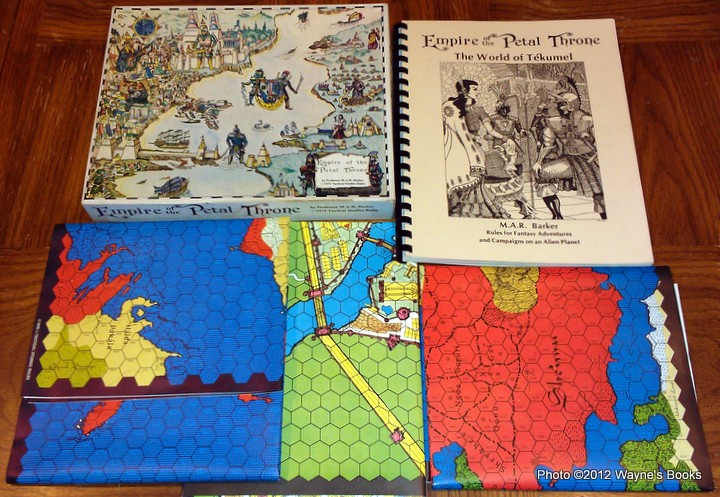
Technically, there has never been a D&D version of Empire of the Petal Throne…technically. The original game actually was published in 1974, only did a short run. In 1975, TSR published a version of the game which had enough similarities with D&D to sort of count on this list. It introduced the notion of the Critical Hit into D&D. It is also arguably the first campaign setting in an RPG of any stripe.
Empire of the Petal Throne was created by M.A.R. Barker. He, like Tolkien, actually created a whole world with cultures, history and languages. The world was called Tékumel. It was a science fantasy setting with a history involving interstellar travel. Some sort of cataclysim isolated the world of Tékumel from the rest of the universe and caused a “dark age.” There were several novels published in the setting, and the game setting has been republished over the years in various iterations systems.
Rokugan
In the days of 3rd edition, there were many changes. Part of those changes involved reimagining previous books to meet the new rules paradigms. Oriental Adventures was one of those books. Instead of being largely setting neutral or tied to the existing KaraTur setting in Forgotten Realms, the book assumed a different setting. That setting was Rokugan, whihc was also the setting for the RPG and Card Games, LEgend of the Five Rings.
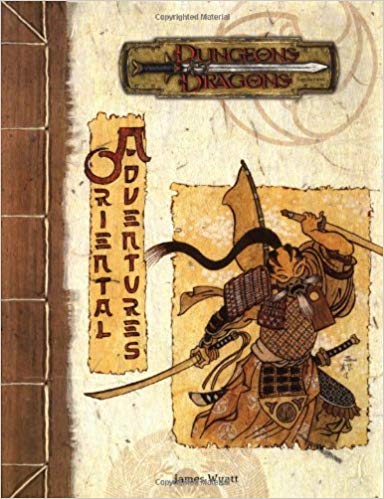
The setting is largely inspired by a mythical fuedal Japan with some elements of China and Korea tossed in. Later books, published seperate from D&D, also introduced an arabian style part fo the world in Legends of the Burning Sands.
Ultimately, this setting left the aegis of D&D when the relationship between Alderac Entertainment Group and Wizards of the Coast ended. The setting continued but in different games.
Kingdoms of Kalamar
In the beginning, there was Knights of the Dinner Table. In the early 90’s this comic portrayed a group of D&D players. The comic developed quite a following. The publishers of the comic, Kenzer & Company, published an unlicensed D&D setting in 2nd edition days. They avoided some of the trade dress and copyrighted material to avoid getting sued.
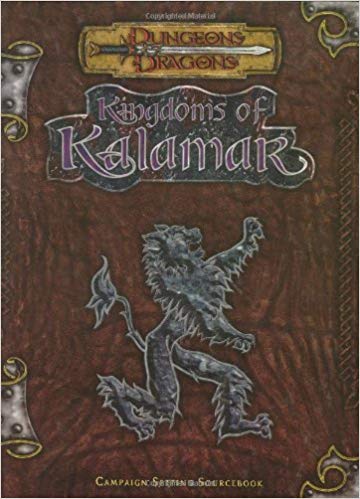
When 3rd edition was announced from Wizards of the Coast, they licensed Kingdoms of Kalamar as an official D&D setting. The people who love the setting really love it. They will tell you how the setting has a lot of realism. For the most part, however, it is a largely a western style fantasy setting not unlike Greyhawk, Forgotten Realms or the like.
When 4th edition was released, they decided they did not like the terms of the new GSL, nor the rules direction, and pulled the game back from being an official setting. It is now tied to the game Hackmaster which is a homebrew version of D&D like the old AD&D. Ironically, the Hackmaster game was just a stand-in term in the comic for a version of D&D. It was a joke, till someone decided to make it.
Warcraft
Warcraft is an interesting story. World of Warcraft is the MMO based on the Warcraft RTS games, which in turn were largely inspired by Warhammer minatures rules from Games Workshop. The MMO, however, avoided the character progression you found in the Warhammer Fantasy Role playing game and instead more resembled D&D. It is not exactly D&D, but it has a lot in common with the classic game.
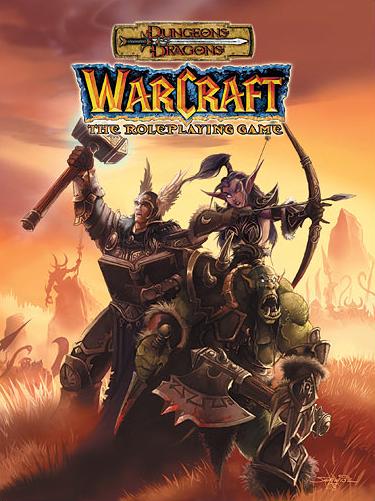
With the launch of 3rd edition the OGL came along and there was an enourmous growth of third party publishers. Along with that was a number of experimental official settings. Kingdoms of Kalamar was one and Warcraft was another. Warcraft was published largely by White Wolf’s D&D imprint, Sword and Sorcery but with the official D&D licensing.
The game is largely D&D under the hood but they did make a number of changes to match the expectations of the video game. Stat names, classes, races, and other things were noticeably different. The partnership didn’t last too long, but they did publish several books.
As a side note, one of the common complaints about 4th edition was that it was too video game like, but the only time D&D published a video game official tabletop rules for D&D was during 3rd edition.
The Wheel of Time Roleplaying Game
The Wheel of Time is a long series of epic fantasy novels by Robert Jordan. The books are also epically long, but that is another matter. The series has an enormous fandom and there is even a good sized convention called Jordancon.
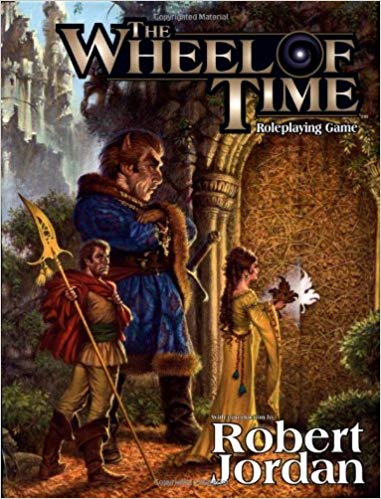
Lost Unicorn Games picked up the rights to do the RPG. Wizards of the Coast absorbed Lost Unicorn Games so Wheel of Time became an official D&D setting. It received a separate thick stand alone book, but that was about it.
The rules were pretty standard D&D 3rd edition rules, but some of the rules did have to be tweaked. While there were optional rules for playing Ogier, the characters were actually all human. To replace race they added a background option which served the same role. The classes were also replaced to match the characters in the books.
Wrapping up
I think that is where we will stop. There were a large number of D&D based rules for various licensed properties through the OGL and
Did you enjoy this breakdown of the settings, not just this post but the earlier ones as well? Would you be interested in more content like it? I am of course going to write game content as well, but I am curious to hear what people think of all this.